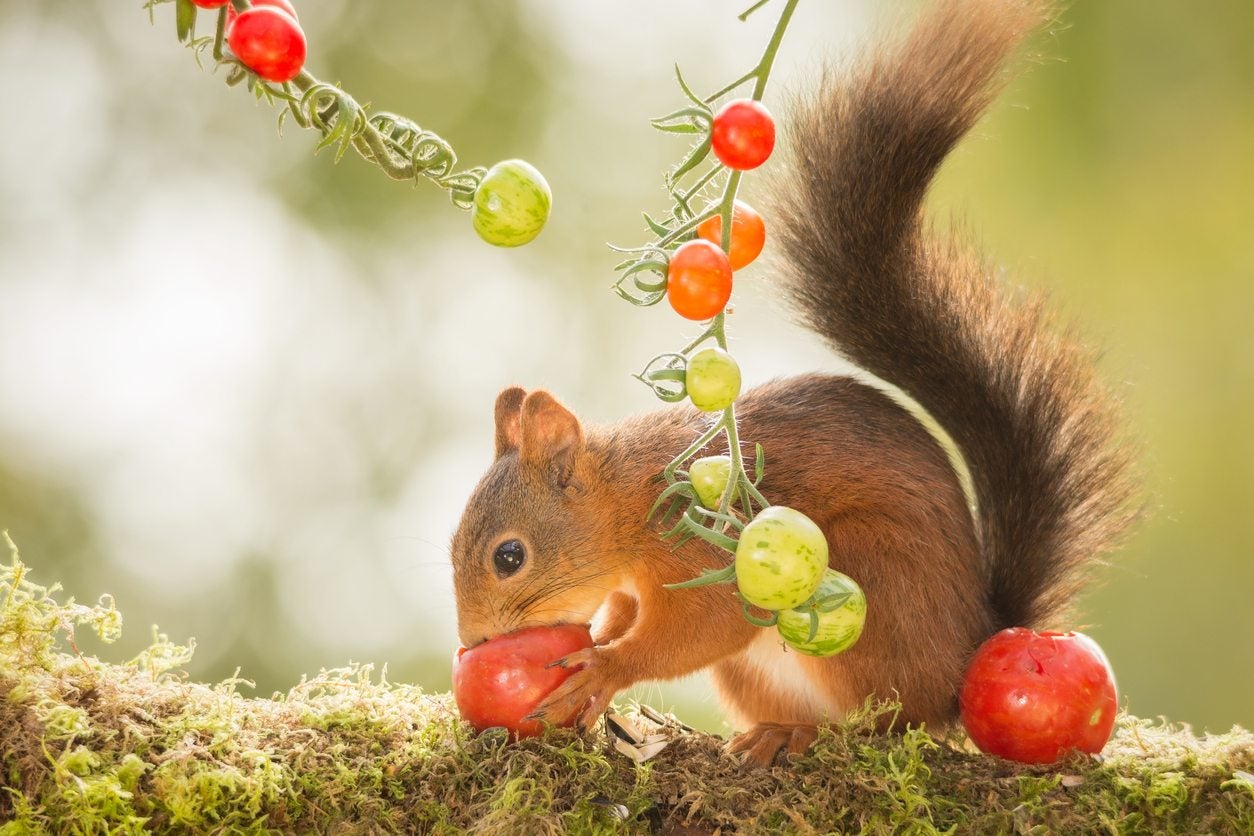Keeping Squirrels Out Of Gardens: Tips On Protecting Tomatoes From Squirrels

Do squirrels eat tomatoes? They certainly do, and if you’ve ever lost tomatoes to a squirrel attack, you may be wondering how to protect tomato plants from squirrels.
Signs Squirrels are Eating Tomatoes
A sign of squirrel damage is medium to large holes chewed in one side of a tomato. Sometimes, a squirrel may eat a whole tomato, but in a seemingly malicious behavior, they usually take bites out of multiple tomatoes, ruining all of them for you. Squirrels are active during the daytime, so if the damage appears overnight, another mammal is the likely culprit. You may also see small holes in your garden or in nearby containers, indicating that a squirrel has been digging there. Or you may see damage to other plants. Squirrels may nibble on flowers, and they’re especially fond of daisies. Damage to both leaves and fruit on a tomato plant indicates a likely insect problem, such as the tomato hornworm caterpillar.
How to Protect Tomato Plants from Squirrels
Building cages to enclose your plants is probably the most effective method of protecting tomatoes from squirrels. You can construct cages around individual plants or around a whole bed, or you can enclose an entire small garden. Since squirrels can jump into your garden from overhanging trees, a roof is necessary. Build the cages of chicken wire fencing or hardware cloth, perhaps with bird netting placed over the top. Repellant sprays, such as those made of chili peppers, can help keep squirrels off your tomatoes. You could choose a commercially available spray or make one at home. If you’re using a homemade, food-safe chili pepper spray, you can apply it directly to your developing tomatoes to deter hungry critters. Remember to wash it off before you eat them! Outdoor cats are great for keeping squirrels out of gardens. So are dogs if you have a fenced yard. Of course, you might need to take measures to keep your pets out of the garden, too. They probably won’t eat vegetables, but they can do a lot of damage by digging if you’re not careful. Scare tactics are another option for protecting tomatoes from squirrels. Try placing noisemaking devices, pinwheels, metal tape, and wind chimes around your garden. However, these usually only work for a few days, so you’ll need to swap them out often, as the squirrels realize they are not a threat. If hawks or other birds of prey live in your area, consider taking measures to attract them by providing them with perches, nesting places, and other needs.
Other Options for Keeping Squirrels Out of Gardens
Squirrels seek out juicy produce to obtain water as well as food. Some gardeners have found success by placing a container of water or even a birdbath on the other side of the yard to draw squirrels away from the garden. Squirrels are attracted to bare soil, where they look for edible roots, nuts, and seeds, and bury treats they’ve found for later. Keeping bare soil covered with plants or mulch will prevent them from being attracted to the area. You may even want to pick tomatoes when they are not quite ripe to keep them away from pilfering squirrels. Cut off a piece of the vine with tomatoes attached, and let them continue ripening on your countertop. Protecting tomatoes from squirrels can be a challenge, but with the above ideas, you’ll surely find success.
Sign up for the Gardening Know How newsletter today and receive a free copy of our e-book "How to Grow Delicious Tomatoes".
Ilana Goldowitz Jimenez is a scientific and agricultural writer with a B.S. in Plant Sciences from Cornell University and a PhD in Chemical Biology and Infectious Disease from Harvard University.